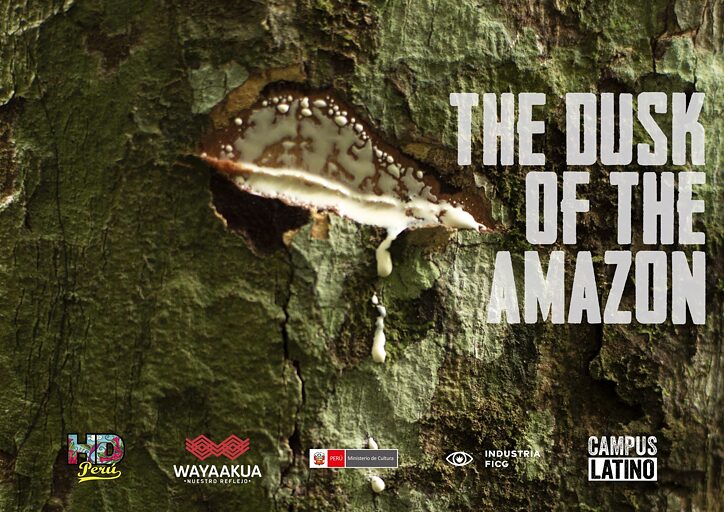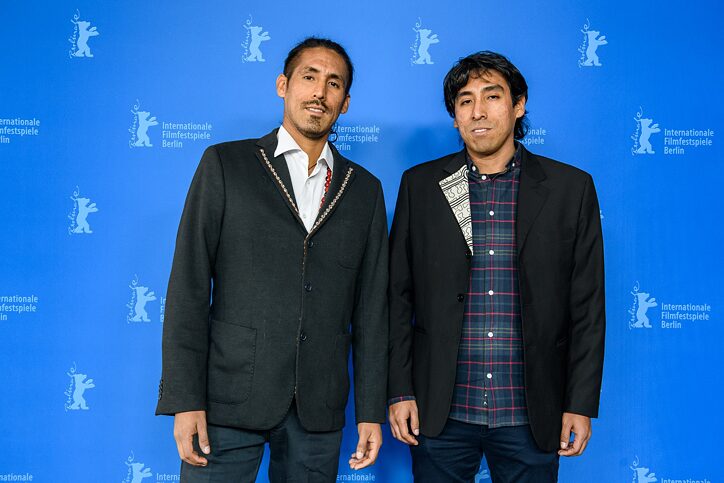The Dusk of the Amazon
Peru
Directors and Producers: Diego Sarmiento & Alvaro Sarmiento
The characters are descendants of the ethnic groups most affected by the bloody era of rubber extraction. As they look to tell their own version of the story, they follow the footsteps of their ancestors, undoing the forced migration of their grandparents and rebuilding their identities.
Synopsis
The Amazon jungle is ablaze. Image of the jungle burning as the result of forest fires.
We follow different rivers in the Amazon Basin with aerial shots while a voice speaking in Huitoto can be heard. The voice talks about how the establishment of the Peruvian Amazon Company started a long history of forced migrations of the Huitoto, Ocayna, Bora and Andoque people. They were slaves to the rubber barons and cheap labour for the successive cycles of extraction and exploitation of wood, gold, petroleum, and the coca leaf. The narrator compares the children of these peoples with the seeds that were taken by violent gusts of wind and that, in this way, they fall ever further away from their origin.
THE DUSK OF THE AMAZON follows the route of this exodus in reverse. It starts at one of the last points of this forced migration, the Ampiyacu River. Here, Mimi Rojas lives in the town of Pucaurquillo.
Mimi Rojas starts to enquire about her past when she learns that her father doesn’t have a National Identity Document. During the search for her father’s identity, she visits the public record places and eventually finds his birth certificate among others of a group of indigenous people who were taken there by their patrons in the ‘50s. The patrons had dismantled their camps on the Putumayo River, due to the increased conflict in Colombia, and took their workers to the Ampiyacu River instead, far from the border.
The next stage of the documentary is set in Remanso, a small border town on the Putumayo River. It was an old rubber extraction camp, founded by the superintendents of the Peruvian Amazon Company. Eriberto Jiménez is the leader of the community and talks about the daily problems that his people face due to geographical isolation. Illegal mining and logging, along with the cultivation of drugs, are constant threats. However, they also seem to be the only ways for local people to generate income.
From the depths of the jungle, we move to the noisy city of Iquitos. Traces of the splendour of the past can be seen on the facades of the houses. The mosaics, the marble, and the stately constructions are testimony to the riches that the rubber boom generated. Rubén Medina, a descendant of the Huitotos and Kukamas, enters the Iron House, an emblematic mansion of the time. He contemplates the interior and reflects how the city was built with the blood of his ancestors.
Rubén travels in a plane to his home, El Estrecho on the Putumayo River, while he talks about his work to revive the culture. He highlights the contribution of his countrymen from the Colombian side of the border, where the culture and language of his people is better preserved. From El Estrecho, Rubén starts his journey on the Putumayo River and then the Igará-Paraná, to arrive in La Chorrera in Colombia, one of the most important branches of the Peruvian Amazon Company and the place where the greed for rubber first stopped the natural development of the people of the region so violently.
Through the struggles and investigations of these three people, the film looks to draw a parallel between the past and present, to show that the violence of the rubber era is not over but instead has taken on different forms. The discrimination against the Amazon cultures, pollution of the rivers, and felling of the forest are the modern expressions of the colonial mentality of the rubber period. As long as the West doesn’t change the way it sees the Amazon, the violence won’t end.

